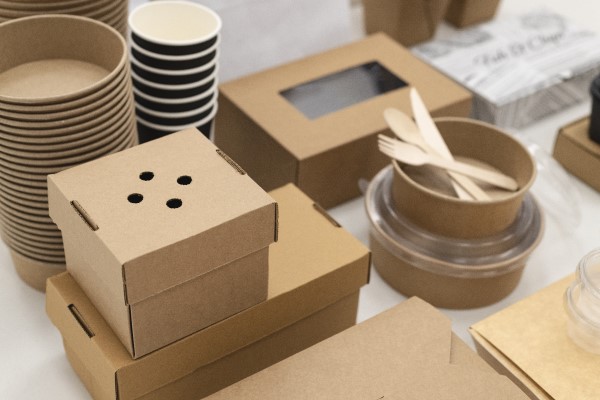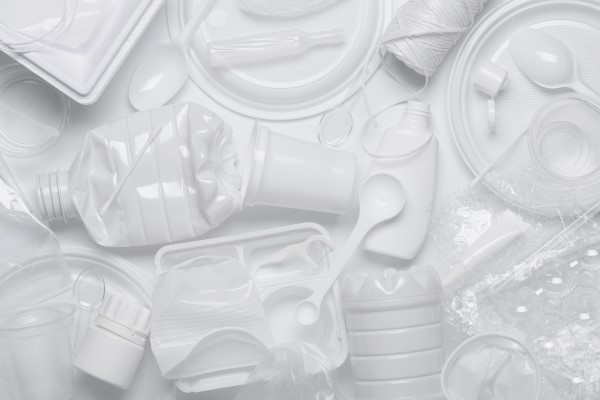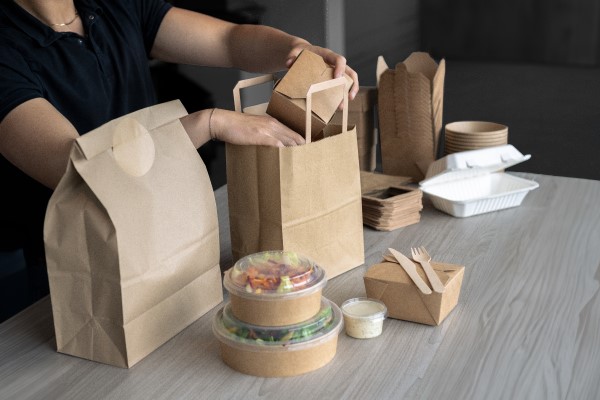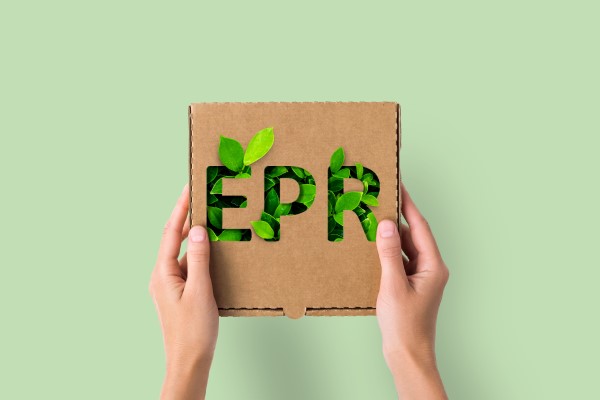Food Packaging Challenges: Addressing Plastic Pollution, the Single-Use Plastics Ban, and Extended Producer Responsibility
The world has grown increasingly reliant on plastics due to their affordability, durability, and versatility. This dependence is evident in nearly every facet of modern life, from household items to industrial applications. Plastics are everywhere—wrapping our groceries, transporting our goods, and even woven into our clothing fibers.
However, the convenience of plastics comes at a steep environmental price. A staggering amount of plastic products are discarded after just one use, creating a massive environmental challenge worldwide. Annually, humans produce over 350 million metric tons of plastic waste, a number projected to triple by 2060 unless policies around plastic production, consumption, and disposal are altered.
It’s alarming to learn that UK households dispose of approximately 100 billion pieces of plastic packaging each year, a number that might actually be higher in reality. Food and drink packaging account for 83% of this waste. This statistic highlights the urgent need for sustainable packaging solutions to address the mounting environmental issues.
Policies like the Single-Use Plastics Ban and Extended Producer Responsibility programs are crucial in driving meaningful change. These measures compel vendors to adopt eco-friendly alternatives and hold manufacturers accountable for the full lifecycle of their products.
Before we delve deeper into these policies, let’s explore what food and drink packaging entails and why it constitutes such a large portion of our plastic waste.Â
Food and drink packaging refers to any material or container used to safeguard, preserve, and present food and beverage products from production to the end consumer. This category employs a variety of materials, including cardboard, plastic, glass, metal, and paper, each tailored to specific product types and purposes.
Beyond its primary roles, food packaging also aids transportation, conveys vital product information, and serves as a marketing tool to enhance appeal. However, its widespread use has led to significant environmental challenges. Several factors contribute to this issue:
Over the last few decades, the UK’s takeaway and fast-food industry has transformed significantly. Once limited to a few options, it now caters to diverse tastes and preferences and continues to expand. Currently, the online food delivery market is anticipated to grow by 5.59% annually until 2029. This growth is driven by hectic lifestyles and a desire for quick, convenient meals. The pandemic further accelerated this trend as lockdowns and social distancing measures made delivery services a preferred choice for safe dining.
Unfortunately, this surge has also resulted in a dramatic increase in packaging waste. Enter the single-use plastics ban, designed to mitigate this issue.
Another significant contributor to the UK’s plastic waste problem is music festivals. These events bring people together to celebrate music and enjoy food and drinks but often leave behind a trail of waste. Despite growing awareness about plastic pollution, festivals continue to rely heavily on single-use plastics due to their low cost and convenience, which often outweighs the benefits of sustainable alternatives.
In 2022 alone, 6.5 million festival-goers attended events in the UK, generating approximately 1.3 million food containers in waste annually. Adding another 2 million discarded plastic bottles to this figure paints a troubling picture of environmental strain.
Many festivals are now adopting sustainability initiatives, blending music celebrations with eco-friendly practices. Initiatives include promoting reusable containers, encouraging attendees to bring their own bottles, and implementing recycling programs. Glastonbury, for example, banned the sale of single-use plastic bottles in 2019, replacing them with refillable options and numerous water stations. Other festivals are following suit.
Research shows that people in England use around 2.7 billion pieces of single-use plastic cutlery and 721 million single-use plates annually, with only 10% being recycled. To put this into perspective, if these cutlery pieces were laid end to end, they would circle the Earth more than eight times.
To combat this, England introduced a ban on certain single-use plastic items starting October 1, 2023, aimed at reducing plastic waste and its adverse environmental impact. This ban covers polystyrene food and drink containers, commonly used for takeaways, and prohibits their sale both online and in stores. Other banned items include cutlery, stirrers, and balloon sticks.
The regulations also restrict the use of plates, bowls, and trays, although businesses can still provide them if used as packaging or filled at the point of sale. Pre-filled bowls or ready meals packaged in trays fall under this exemption.
However, the ban does not apply to shelf-ready packaging or pre-packed items. These will be addressed under the government’s Extended Producer Responsibility (EPR) framework. Exemptions exist for medical devices, care homes, schools, and other specific contexts where single-use plastic straws and cotton buds are necessary.
Through this ban, England encourages more sustainable practices to reduce plastic waste and protect the environment. Similar bans have been implemented in Wales, Northern Ireland, and Scotland.
As the UK moves toward reducing plastic waste, businesses are exploring sustainable alternatives. As a carbon-neutral company, we are committed to providing eco-friendly food and drink packaging solutions that align with new regulations. Many businesses trust us for their packaging needs.
Food Containers & Trays
Our takeaway boxes are made from kraft paper, which is 100% recyclable, biodegradable, and commercially compostable. Unlike polystyrene, these boxes support responsible disposal while accommodating various cuisines, from burgers to fish and chips. We also offer burger boxes made from bagasse, a sugarcane byproduct. Bagasse decomposes into nutrient-rich compost and is rapidly renewable, making it an excellent substitute for plastic or polystyrene containers.
Coffee Cups
Our coffee cups are crafted from 100% recyclable virgin food-grade double-walled paper, minimizing their environmental footprint. The accompanying lids, made from virgin food-grade PS plastic, prioritize food safety and can also be recycled.
Whether you're selling a latte or an americano, these cups come in multiple sizes to suit different drink volumes. Wooden Cutlery
Made from birch wood, our wooden cutlery is 100% commercially compostable and environmentally friendly. Unlike plastic utensils, which linger in landfills, this wooden alternative doesn’t contribute to pollution. It’s cost-effective for takeaway businesses without sacrificing quality. It pairs well with main meals, sides, desserts, and even hot drinks.
Alternatives for Plates
If you're looking for an eco-friendly solution, our takeaway boxes serve as a practical replacement for plates. Made from 100% recyclable and biodegradable materials, these plates are a guilt-free option for serving delicious meals.
Kraft Paper Bowls
These bowls, crafted from sustainable kraft paper, are fully recyclable and biodegradable. Unlike plastic versions, they don’t harm the environment. Even the polypropylene lid is widely recyclable.
Explore more food packaging options. Extended Producer Responsibility (EPR) aims to address the environmental costs associated with products throughout their lifecycle, with a particular emphasis on managing packaging waste. EPR marks a significant shift in responsibility for handling packaging waste. Instead of relying solely on taxpayers and the government, this scheme shifts the burden to producers and importers of packaging materials, holding them accountable for the sustainable disposal of the packaging they introduce into the UK market. Under EPR, obligated packaging producers are responsible for funding and actively participating in the entire waste management process, including collecting, sorting, treating, and recycling packaging waste. By internalizing these costs, it incentivizes the use of more sustainable packaging materials.
An obligated producer is a business that handles 50 tonnes or more of packaging materials annually and has a turnover of £2 million or more. These entities fall under the EPR scheme and are classified as ‘packaging producers.’ Their responsibilities go beyond compliance, encompassing sustainable practices and environmental considerations.
Compliance requirements vary depending on whether a business is considered ‘small’ or ‘large.’ Small organizations handle between 25 and 50 tonnes of packaging or packaged goods annually and have a turnover of £1 million to £2 million. Large organizations handle more than 50 tonnes and have an annual turnover of £2 million or more. By holding obligated producers accountable, we take a significant step toward a more responsible and circular economy. We assist businesses with EPR compliance through our government-accredited scheme. Unlike others, Kite Environmental Solutions (KES) guides you through the entire process, from data collection to compliance. We help with: 1. Understanding how EPR impacts your business and guiding you through the entire process. 2. Identifying the data you need to collect and developing a tailored system to assess your obligations, including calculating packaging weights for each stream. 3. Ensuring compliance with Environment Agency data accuracy standards and preparing you for audits. For more information, visit https://www.packagingregs.co.uk or contact us at 024 7642 0080.
TV stand is a piece of furniture designed to support and display a television set. It is commonly used to hold the TV at a comfortable viewing height, provide stability, and offer storage space for related devices and accessories.
TV stands come in various styles, sizes, and materials to accommodate different preferences and room décors. Some common types include:
Entertainment Center: These are larger TV stands that typically encompass multiple shelves, cabinets, and drawers. They can hold not only the TV but also audio/video components, gaming consoles, DVDs, and other media.
Console Stand: Console stands are sleek and minimalistic, designed to hold the TV on top while providing a couple of shelves or compartments below for basic storage needs. They are often made of wood, metal, or a combination of both.
Wall-Mounted Stand: These are not traditional stands but rather wall-mounted brackets or shelves that securely hold the TV on the wall. They are ideal for saving space and creating a clean, modern look. Wall-mounted stands may have adjustable features for swiveling or tilting the TV.
Corner Stand: Corner TV stands are specifically designed to fit in the corner of a room. They have a triangular or wedge-shaped design to maximize space utilization while providing storage options.
Mordern TV Stand,Wooden TV Stand,Wall TV Stand,Corner TV Stand,Bedroom TV Stand,Simple TV Stand,TV Stand Cabinet Ningbo Greenly Industy Co.,LTD. , https://www.chinagreenly.comChallenges in Food Packaging: Addressing Plastic Pollution, the Single-Use Plastics Ban, and Extended Producer Responsibility
Plastic Pollution in the UK
What Defines Food and Drink Packaging?

Why Does Food and Beverage Packaging Contribute So Much to Plastic Waste?
The Rise of Food Delivery Services
Food and Drink Packaging at Festivals

Single-Use Plastics Ban

Sustainable Swaps: Kite’s Eco-Friendly Packaging Alternatives

Extended Producer Responsibility: A Sustainable Approach to Packaging Waste
What Exactly Is EPR?

Who Qualifies as an Obligated Producer?
What Are the Obligations of Packaging Producers?
How Can Kite Help With EPR?